Microclimate Monitoring Weather Stations
Overview
A microclimate is a set of climatic conditions in a relatively small area, where the climate is modified by significant features in the immediate vicinity.
By implication, microclimate conditions vary, sometimes significantly from the general climatic conditions in the greater area or region.
In microclimate measurements, the intention is to measure the climate including these local effects in contrast to Mesoscale or wide area monitoring, which has the intention of taking measurements that exclude any local effects.

Key Features for Microclimate Weather Stations
-
Robust, reliable & durable, to withstand the wide range of harsh conditions experienced across this country
-
Australian Made, designed and owned
-
Quality materials, no cheap plastic parts used
-
Industrial and commercial grade – Long service life means value for money
-
Pre-programmed to suit your requirements
-
Accurately monitors the immediate micro-environment, with special design features to make sure you record the relevent data to your application

Key Benefits for Microclimate Weather Stations
-
Be informed when local weather events happen that impact on your site, such as heat, wind or rain events.
-
Environdata can provide a full Installation & Commissioning Service to get your system up and running - and adds an extra 12 months warranty for free
-
Our weather stations can be used as either a fixed site or mobile station
-
Current readings, 10 minute, hourly and daily weather data are standard. Customise to suit your needs. Around 12 months storage on System.
-
On site servicing, calibration and maintenance service by Environdata technicians keeps your systems running.
-
Accurate sensors with minimal drift. Long service life
-
Download your weather station direct, use telemetry to your office, or:
-
Use Environdata’s WeatherMation LIVE service to automate your weather data collection and management
About Weather Stations for Microclimate Monitoring
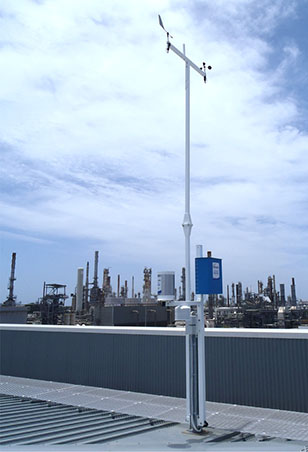
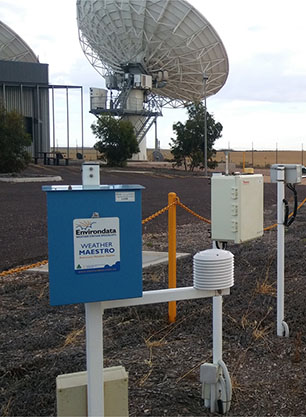
Examples of Microclimates
Examples of microclimates include areas dominated by a large body of water, an urban area surrounded by brick buildings or an area covered by a canopy of vegetation. Microclimates can also be created by aspects of land such as north facing slopes as opposed to south facing slopes.
The effect of this, for example, is that large buildings will significantly modify both wind speed and direction in their immediate vicinity; air temperature and possibly relative humidity might also be changed as a result of absorption and re-radiation of heat.
As another example, an area under a canopy of trees would have vastly different soil temperature and moisture values, as well as varying wind characteristics from neighbouring open fields.
A crop trial therefore will typically have it's own unique micro-environment, as will a feedlot, or evaporation ponds.
Working environments - such as construction sites - will also have unique micro-environments when monitoring for worker heat stress.
Requirements
- In microclimate applications, the weather station is typically located within the working area, whereas Mesoscale applications require more demanding siting requirements and a larger dedicated area is normally allocated, specifically for the purpose.
- Microclimates can provide a significant commercial advantage in industrial and agricultural applications and their effects should be given serious consideration.
Micro Environment Weather Station Options
- Depending on the specific requirement for microclimate monitoring, any of the Environdata weather stations may be the preferred choice.
- As readings are generally more localised, a small compact weather station such as Environdata’s WeatherMaster 3000, is likely to be the most well featured and economical solution.
- The Weather Maestro may well be considered for Micro-Environment weather monitoring where unique sensor combinations, specialised sensors, large numbers of sensors or future expansion is important.
- Sensors are typically mounted close together on a two metre mast and ten metre masts are rarely used unless you also need to monitor mesoscale weather to meet an environmental licence for example.
- Environdata can advise on the ideal solution for you and supply a wide range of specialised sensors and communications options to meet your specific requirements.
Microclimate weather stations do not have as stringent siting requirements as mesoscale weather stations and should be typically sited as close as possible to the area in question.
Typical Weather Stations
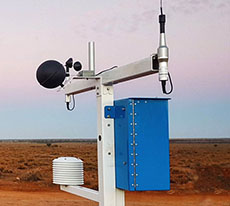
FULL SYSTEM
Weather Maestro
The Weather Maestro station includes a bigger data logger for more sensors and the ability to incorporate specialised sensors, Cellular telemetry, UHF or Satellite telemetry.
Most suited when multiple sensors, unique sensor combinations, specialised sensors or future expansion is important and remote communications are required.
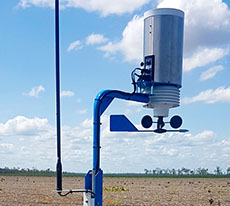
COMPACT, ALL-IN-ONE SYSTEM
WeatherMaster ULTRA
The WeatherMaster weather station provides a simple and compact method of monitoring your micro environment. With 6 standard sneors and several configurations plus options to expand to 8 sensors, most micro environment applications can be serviced with this option.
Micro Environment Weather Stations
Useful Links
Relevant FAQs
Some Typical Sensors

RAINFALL
A tipping bucket rain gauge needs to be reliable and robust. It needs to be made from materials that won’t corrode and won’t degrade in the sun. Our RG50 series tipping bucket rain gauge is made from marine grade stainless steel, copper and aluminium with a Hall Effect sensor for maximum field life. If you have a bird problem, then our optional bird spikes keep them from fouling the gauge.
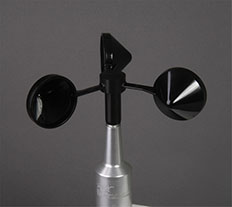
AIR TEMPERATURE, RELATIVE HUMIDITY, WIND SPEED, WIND DIRECTION & SOLAR RADIATION SENSORS
The ideal weather sensors for environmental monitoring are stable, robust and work reliably year after year. While you don’t need the highest level of accuracy, you do need it to survive in the weather and simply keep going. This is what Environdata’s sensors are designed to deliver. They are accurate as well, but we figure you won’t mind.
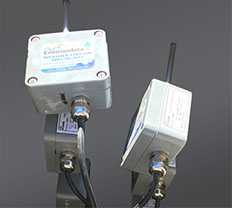
SOIL MOISTURE & SOIL TEMPERATURE
Environdata manufactures a heavy duty long lasting soil temperature sensors and can supply a large range of soil moisture sensors from third parties. These can include probes with both soil moisture and Soil Temperature as 'depth profilers', or single point high accuracy sensors.


 Premium Equipment & Software
Premium Equipment & Software Australian Made & Supported
Australian Made & Supported Expert Advice & Custom Solutions
Expert Advice & Custom Solutions Australia-wide Installation & Service
Australia-wide Installation & Service Satisfaction Guarantee
Satisfaction Guarantee Email Us
Email Us Call us on 07 4661 4699
Call us on 07 4661 4699 Follow Us
Follow Us